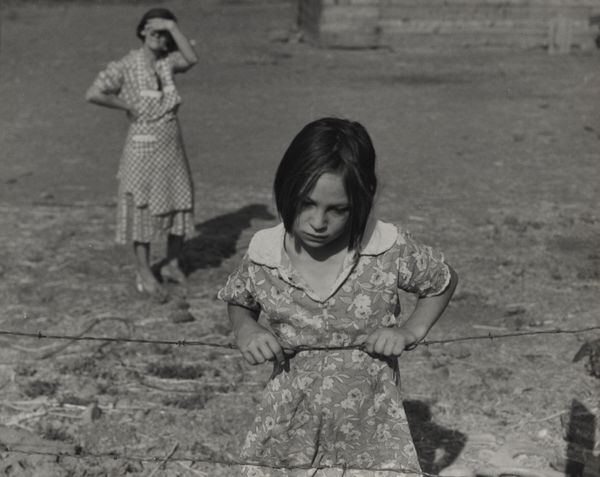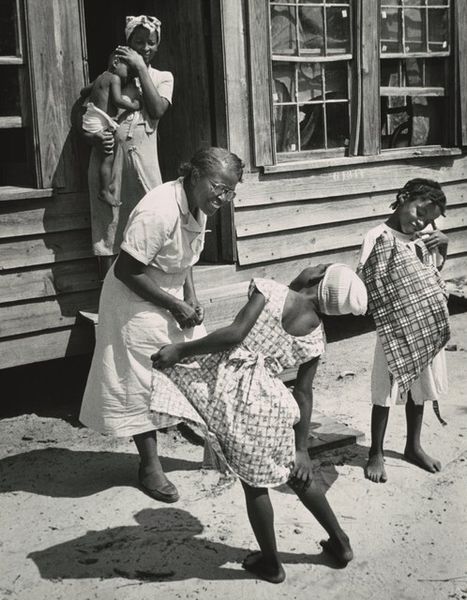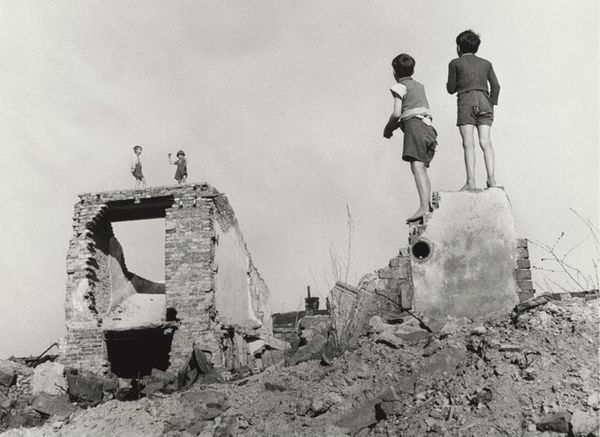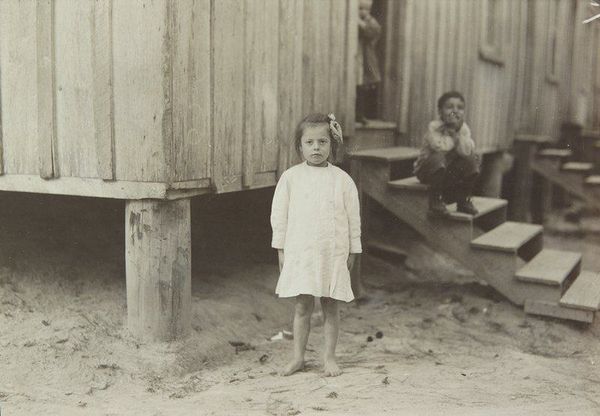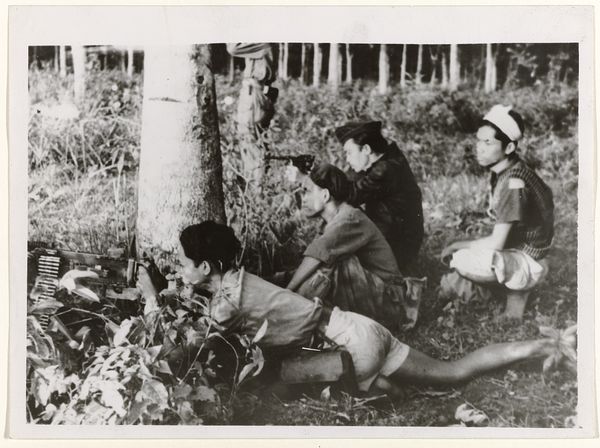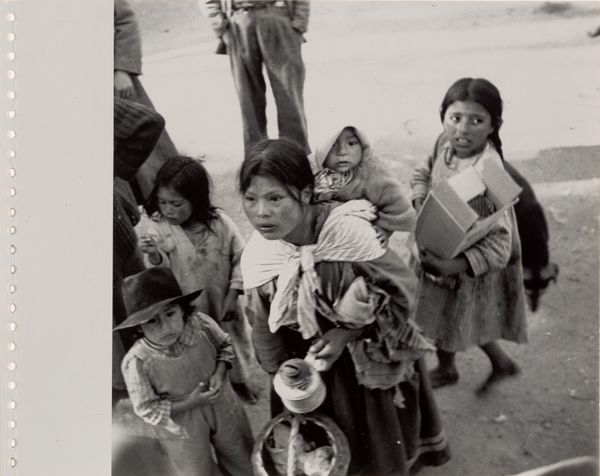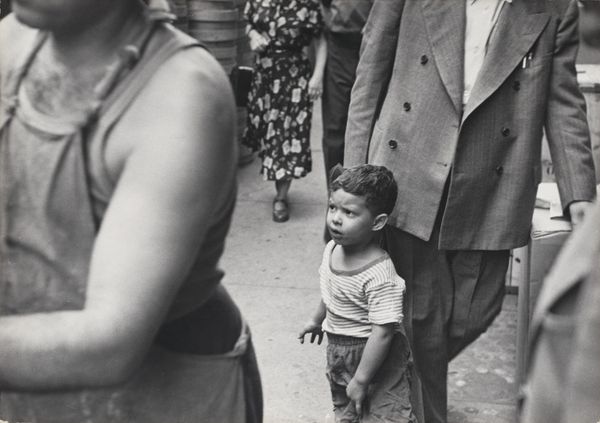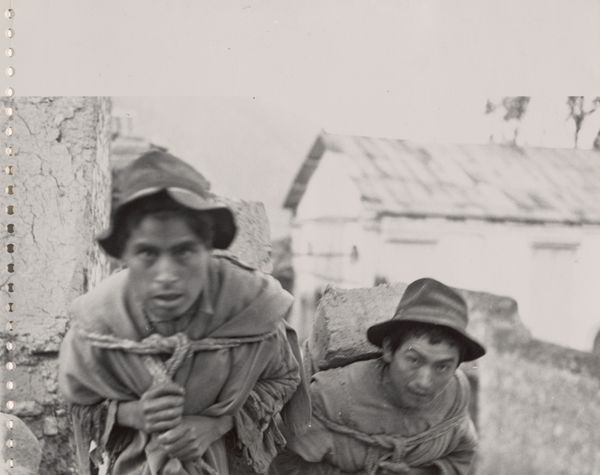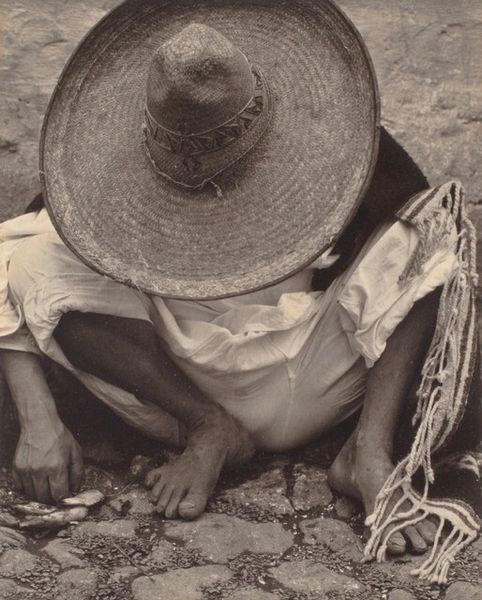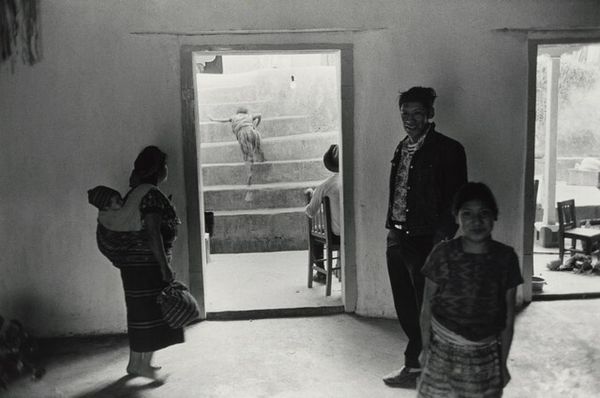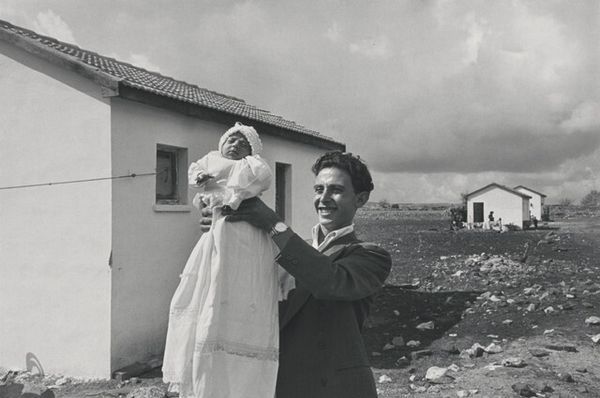
photography, gelatin-silver-print
#
portrait
#
black and white photography
#
landscape
#
black and white format
#
photography
#
group-portraits
#
black and white
#
gelatin-silver-print
#
monochrome photography
#
monochrome
#
realism
Dimensions: image: 18.5 × 28 cm (7 5/16 × 11 in.) sheet: 24.5 × 35 cm (9 5/8 × 13 3/4 in.)
Copyright: National Gallery of Art: CC0 1.0
Curator: Welcome. Today, we are considering Ed Grazda's black and white photograph, "Chiapas, Mexico" taken in 1975, a gelatin silver print. What's your initial read of this composition? Editor: There's a disquieting stillness here. A starkness. The children are poised, almost unnaturally so, in what looks like a ravaged landscape. It evokes a feeling of precariousness. Curator: The photograph's geometry certainly contributes to this sense. Note how Grazda places the centrally located chair, as well as the children, in a way that creates a layered effect through careful framing, providing the whole image with stability through structure. Editor: Yes, but what does the chair signify? Is it an absence? A missing presence within this family or community? The visible devastation of the land in the background—presumably clear cut or burned for agriculture or some other resource extraction—speaks to larger economic forces impacting these lives. Curator: We could consider it in formal terms; its placement creates a visual anchor in the foreground, a strong vertical element that leads the eye upward, connecting the children to the deforested hills behind them. Editor: I read it as less about visual connection and more about alienation. These children, in their traditional clothing, seem almost displaced within this modern, damaged landscape. It speaks to themes of colonialism and cultural disruption, especially knowing that Chiapas has a history of indigenous resistance and struggle. Curator: Undoubtedly, those themes are present, but it is equally important to analyze the photograph's formal achievement: the delicate tonal range of the gelatin silver print, the subtle variations in light and shadow. Notice, too, how the photograph blends portraiture and landscape styles seamlessly. Editor: But what does it mean to separate aesthetics from ethics? Can we truly appreciate the tonal range without considering the story embedded within? These are not just aesthetic objects; they are documents of human experience. They reflect lives caught within larger systemic inequities. The children's direct gaze seems to question our own position as viewers. Curator: Your interpretation allows the picture to open itself to broad cultural meanings, whereas a closer viewing—analysis of tonal arrangements—opens onto its structural significance. The balance it strikes provides a richness that can be deeply felt. Editor: Indeed. Perhaps the strength of Grazda's photograph lies in this very tension—the interplay between formal structure and raw lived experience, demanding that we consider both simultaneously.
Comments
No comments
Be the first to comment and join the conversation on the ultimate creative platform.
